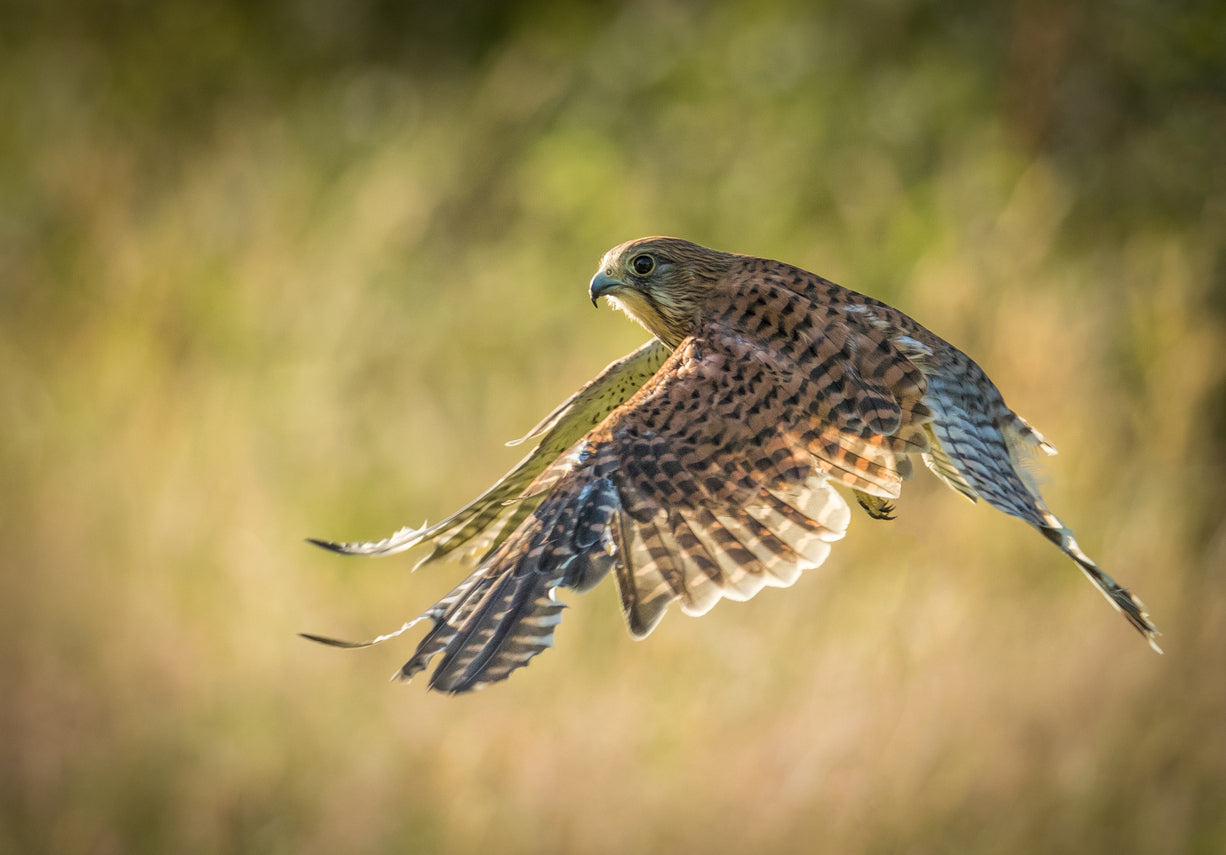Although the population of kestrels has decreased in the UK over recent years, they are still Europe’s most common bird of prey. Male kestrels have a chestnut brown upper body with a blue-grey coloured tail and head. Female kestrels are darker in colour with black barring across their wings.
The RSPB estimated that there are currently around 46,000 breeding pairs of kestrels in the UK, and they can be seen in a wide variety of different habitats. In fact, you are just as likely to spot a kestrel hovering gracefully beside a main road or motorway as you are out on rural farm, moor or heathland across the country.
Nesting Habits
Kestrels tend to avoid dense forestland, mountainous territory and treeless wetlands because they aren’t conducive to successful hunting. Cliff ledges, tree holes and buildings all make ideal kestrel nests, and they will certainly be tempted if these locations are lined with straw and sticks. Keeping a watchful eye on tall tree branches and telephone posts is recommended if you’re keen to catch a glimpse of one of these graceful birds, as this is where they spend a considerable amount of time when they are looking out for possible prey.
Diet
Small rodents, particularly voles, make up much of the diet of kestrels who choose to make the British countryside their home, but their urban counterparts typically feast mostly on small birds, particularly sparrows. When the opportunity arises, kestrels will also eat earthworms, a variety of large insects, bats and lizards.
Hunting Behaviour
When there are no static perches available to hunt from, kestrels will demonstrate their mastery of the art of accurate hovering, even in exceptionally strong winds. This hunting method uses a lot of energy, however, which is why, especially during the winter months, they prefer to use perches.
Unsurprisingly, kestrels’ eyesight is excellent. They can even see ultra-violet light, which is especially handy when they are hunting for voles because vole urine glows in UV light.
General Facts
Latin name: Falco tinnunculus
Length: 25 cm - 35 cm (10” - 14“)
Wing span: 60 cm - 65 cm (24” - 26”)
Weight: 140g - 200g (5oz - 7oz)
Seen: Year round
Conservation concern status: Amber

